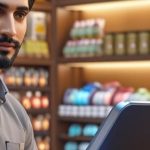Why Store Owners Should Optimize Their Mobile Presence
The idea of optimizing for mobile is far from new. But the ways in which retailers can use technology to connect with mobile shoppers have become far more advanced than the limitations we faced with the first generation of smartphones.
Below, let’s look at why consumers are buying local instead of online, and how you can optimize your retail store for today’s mobile shopper.
Why Shoppers Are Buying Local
Most consumers shop local because of reasons related to trust and security. Fraudulent ecommerce sites have fostered mistrust with newer or lesser-known online stores. Plus, being able to physically interact with another human instills more trust. Second to trust and security reasons,many shoppers also like the easy returns process that a brick-and-mortar store facilitates. And half like being able to experience a product in real life before purchasing.
Consumers who prefer shopping in-store to online are also after convenience. They like shopping at stores that are close by, being able to take the product home immediately, and having instant access to assistance from associates.
How Mobile Fuels the Shop Local Movement
Buying local and being mobile may not seem to go hand-in-hand at first glance. But if you think about it, the advancement and widespread usage of mobile technology is fueling the shop-local movement. The majority of consumers use mobile devices to connect with local businesses, but the key is in understanding how consumers use mobile to engage with local retailers.
Let’s look at more ways to optimize for the mobile shopper:
How to Connect With Mobile Customers
Learning how to connect with the increasingly mobile shopper is also important to businesses. Nearly half have begun optimizing marketing strategies and campaigns for mobile users, while many believe this will be even more important in the future.
Here’s how to connect with mobile users:
- Design Mobile-First
First thing’s first: You’ll want to adopt a mobile-first approach to design. Consider how different the experiences are on a desktop computer versus a mobile device. The layout, page design, font size, and even button copy should all be reviewed from a mobile perspective. For example, Oscar POS’ website is easily accessible on any mobile device and the layout design is straightforward enough for people to understand the particulars related to the business. Moreover, the information provided is also up to date, so customers can get to understand everything efficiently.
What else should you do to be “mobile-first” in your website design? For one, consider the major difference of a mobile user: The device can place phone calls. Because of that, you might want to put an easy-to-find button with your phone number that users can easily tap to place a call to your store. This is obviously not a design element you’d want to highlight on the desktop browser experience.
- Optimize Your Local Listings
Monthly, users conduct about seven billion unique local searches on Google. And one survey found that nearly half of businesses think it’s easy to use, while many know it’s important but still don’t fully understand how to use it. That means there’s lots of opportunity for retailers that optimize their Google My Business (GMB) listing.
Start by claiming your listing (it’s free!), and fill out your profile completely. If you don’t, Google users have the option to edit your listing, and you risk having inaccurate information on your listing. Use local inventory ads to serve up specific product ads and promotions and let shoppers know what’s in stock and what’s not.
- Develop a Mobile App
Majority of time spent on a mobile device happens inside mobile apps, so investing in your own retail mobile app could be a wise move to generate more sales. For example, Udhaar is an app designed for credit management purposes and it makes it easier for customers to manage their debts with retailers. Mobile apps certainly make things easily accessible to many people not just in Pakistan but also around the world.
There are many things you can do with a retail mobile app. Here are some ideas to get started:
- Offer in-store navigation assistance so shoppers can find what they’re looking for without needing an associate.
- Create a customer loyalty program and allow users to earn, redeem, and view their balance in the app.
- Introduce augmented reality to enhance the in-store experience.
- Allow customers to shop what’s in stock and learn more about the product without having to ask an associate.
- Send personalized marketing messages and push notifications based on user behavior and location in the store.
- Include a barcode scanner so users can see instant pricing and product information after scanning the price tag.
- Leverage In-Store Beacons
Beacons are wireless, Bluetooth-enabled devices that connect to smartphones within close proximity. The use of beacons, or proximity marketing, in the retail setting allows businesses to send personalized messages to nearby shoppers who have the required apps installed and Bluetooth turned on. Beacon technology is also used to engage with shoppers once they’re already in your store. This type of approach can encourage customers to linger longer — and, hopefully, spend more.
- Provide In-Store WiFi
WiFi marketing is an in-store tactic that retailers can use to engage with shoppers on their mobile devices while they’re in your store, plus continue the relationship with them after their in-store experience.
Essentially, you can grow an email list or social media following by creating a barrier to the free WiFi network. To get past the barrier and gain Internet access, customers must opt into your list or follow you on social media. This also provides you with basic data that you can use to personalize messaging and promotions.
While the reasons behind the trend may vary, one thing is certain: Mobile is only going to increase in popularity. Consumers are becoming more connected, and retailers that meet shoppers where they’re at will have the easiest time keeping up.








